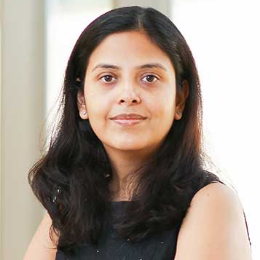Exploring the Rollout of India’s Senior Healthcare Coverage Programme
The Indian government announced a ₹5 lakh health insurance cover for citizens over 70, as part of the Ayushman Bharat Pradhan Mantri Jan Arogya Yojana, a few months ago, a move that covers secondary and tertiary care hospitalisation for an additional 6 crore senior citizens.
The INR 5 lakh health insurance cover for citizens over 70 years of age, as part of the INR 12,850 crore Ayushman Bharat Pradhan Mantra Jan Arogya Yojana (PM-JAY) universal healthcare programme, is a much-awaited policy announcement that the Indian government has made, for those millions outside the healthcare system or have minimal health cover primarily due to its unaffordability. The target is to cover the bottom 40% of the Indian population to provide health insurance for secondary and tertiary care hospitalisation. So, how will this roll out, and what are its implications for the larger public healthcare system as India has a rapidly ageing population?
The scheme covers citizens aged 70 and above with annual medical insurance coverage of INR 5 lakh per family with a beneficiary base expansion to be done at a cost of INR 3,437 crore. It’s also expected to benefit an additional 6 crore people, adding to Prime Minister Narendra Modi's 2018 Ayushman Bharat — the world's largest health insurance scheme — an attempt to overhaul a public health system struggling with a shortage of hospitals and doctors.
The government has chosen the magic figure of 70 years and above, and sans socio-economic status for being eligible for this health policy, with the number of people aged 70 years and above rising in the recent past. Since the 2.79% rise in 2010, population aged 70+ years shot up by 38.40% in 2020, according to World Data Atlas1. Incidentally population aged 70+ years of India increased by 3.73% from 50,57,37,000 persons in 2019 to 52,45,96,700 persons in 20202.
Increased Life Expectancy
It is to be noted that life expectancy has improved because of numerous medical and healthcare advancements. The life expectancy in India in 1950 was 35.21 years. Coming closer, it shot up to 69.96 years in 2021 and, in 2023 it was 70.42 years. In 2024 it rose marginally to 70.62 years3. Putting this into perspective, life expectancy in the US was 68.33 in 1950, it is now 79.05. China, too, has shown consistent improvement. While it was 43.45 in 1950, in 2024 it is 77.64 years, a 0.22% increase from 2023.
A Global Perspective
The WHO Consultative Group on Equity and Universal Health Coverage was set up to develop guidance on how countries can best address issues of fairness (or equity) that arise on the path to UHC. The Consultative Group issued put out its report, Making Fair Choices On The Path To Universal Health Coverage, in early 2014.
It has been observed that Universal health coverage (UHC) is at the centre of current efforts to strengthen health systems and improve the level and distribution of health and health services. To achieve UHC, countries must advance in at least three dimensions: expanding priority services, including more people, and reducing out-of-pocket payments.
In doing so, they face the following critical decisions: Which services to expand first? Whom to include first? How to shift from out-of-pocket payment toward prepayment and pooling of funds? They also face trade-offs between these dimensions; for example, between covering more services, or covering more people.
However, it said that many values are relevant to making these decisions and that their importance will depend on each country’s context.
Singapore’s Experience
Singapore has a universal health care system where the government ensures affordability, largely through compulsory savings and price controls, while the private sector provides most care. Interestingly, the city-state’s annual spend on health care amounts to about 5% of its GDP. Of that, 66% comes from private sources5.
Singapore’s mix of a public and private health system shares some similarities with that of the United States, but the way the system is split looks very different. Eighty percent of primary care is delivered through the private sector, while 80% of all acute care and 100% of hospital ownership is public. Like almost all countries other than the U.S., Singapore provides universal coverage, but it does so with a strong commitment to personal responsibility and consumer-driven health care. All services include at least some cost-sharing.
At the same time, two challenges are cited in debates. Rising health care costs: The country currently spends only five percent of GDP, but costs are rising quickly and per-person expenditures are among the highest in the world. Between 2010-2020, government spending on health care tripled from about $3 billion to $10 billion and is estimated to nearly triple again by 2030.
Integration of primary and specialty care: It is using payment incentives to push family (primary care) doctors to focus on prevention and overall health improvement, while working with specialists as needed to support their patients in managing chronic conditions. So, Singapore has found no magic bullet to address these challenges and continues to experiment with policy solutions. And, that is something India can also look at and study.
First Movers in India
Interestingly some states like Andhra Pradesh, Telangana and later Karnataka, Tamilnadu, Kerala, and Rajasthan have their own healthcare schemes catering to their citizens.
The genesis of this healthcare scheme was the YSR Aarogyasri Health Insurance Scheme launched in 2007 by the YS Rajasekhara Reddy, former Chief Minister of the combined Andhra Pradesh to provide financial aid to low-income families in the state. Later, this became a template for other states to follow. Even the residual Andhra Pradesh has launched some healthcare schemes for the elderly. How will these schemes — especially with new governments of different political parties — pan out this? Will they co-exist with the latest scheme of the Centre or dove tail together?
The Ground Reality
While this is so, the situation on the ground too is not exactly pleasing. According to reports, private sector hospitals in many states have reduced their services to beneficiaries of the AB PM-JAY due to payment delays amid insufficient fund allocations from state governments towards the health insurance scheme, which is jointly funded by the Centre and states in the ratio of 60:40, with the union government allocating ₹7,500 crore to PM-JAY in 2024.
“The problem of untimely payments to the hospitals arose when some states like Telangana, and Andhra Pradesh merged their state health scheme into the PM-JAY," Girdhar Gyani, director general, Association of Healthcare Providers of India (AHPI), which represents a majority of healthcare providers in India, told Mint6. The inordinate delay in receiving reimbursement has hampered the cash flow of these private hospitals and created serious operational issues, Gyani added.
The reduced participation of private hospitals in the Ayushman Bharat scheme could also severely impact patients. PM-JAY currently has a network of 30,178 empanelled hospitals—both private and public—with a 12,881 share of private healthcare providers. They offer over 2,000 treatment procedures across 27 specialties. While hospitals can sustain low health package rates, but if the cash flow is affected, they will not accept the scheme and will start avoiding the beneficiaries citing unavailability of beds, Gyani said, adding that a representation had been submitted to the government to resolve this matter as soon as possible.
In fact, the central government has been consistently telling the states that if they want to bring additional population under PM-JAY, then the additional amount must be given by the state government only and the central government will not contribute to it.
Centre-state Turf Battle
To tide over this conflict which is, and which will impact the reach and efficacy of the otherwise great scheme, The Fifteenth Finance Commission Chairman N.K. Singh said in the Commission’s recommendations that Health should be shifted to the Concurrent list under the Constitution. Presently, ‘Health’ is under the State List.
The argument in its favour? Bringing Health into the Concurrent list would give the Centre greater flexibility to enact regulatory changes and reinforce the obligation of all stakeholders towards providing better healthcare. But it is easier said than done since states are averse to cede their power. Their argument is: Right to Health, which is neither necessary nor sufficient to guarantee the provision of accessible, affordable and adequate healthcare for all.
Besides, the Right to Health is already provided for through Article 21 of the Constitution’s Article 21 that guarantees protection of life and liberty. The others are: it challenges the Federal structure and shifting ever more subjects from the states to the Centre would erode India’s federal nature and impair efficiency by abandoning the principle of subsidiarity. But then, politicians and policy makers must find a way out to of this to ensure that healthcare insurance is provided efficiently and timely to the citizens.
Shilpa Aggarwal, Associate Professor, Economics and Public Policy, ISB, believes that universalising care requires balancing cost-sharing models, as some other countries do, with India’s fiscal realities. She says, “Central-state collaboration is key: integrate disparate state schemes, avoid duplication, and allocate funds transparently. Prioritising preventive care and chronic disease management for seniors — not just hospitalization — could also reduce long-term costs while aligning with global UHC goals of fairness and inclusivity.”



